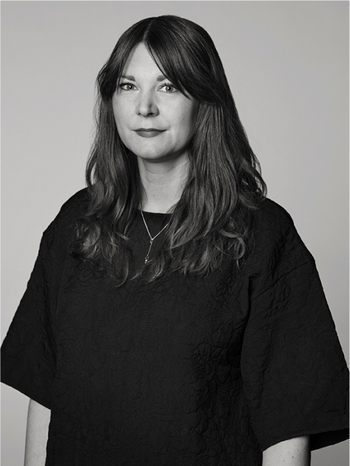Inger Ekdahl
INGER EKDAHL, oil on canvas, signed Inger Ekdahl and dated 52 on verso.
'Skogsinteriör'. 33 x 41 cm.
More information
Konstnären som gifte sig med Eric H Olson (känd med sina optokromier) 1944 studerade därefter först hos Isaac Grünewald och Otte Sköld i Stockholm. I början av 50-talet så flyttade paret till Paris där de blev vänner med bland annat galleristen Denise René. Inger Ekdahl blev vid denna tidpunkt inspirerad av spontanismen och som enda svenska konstnär utvecklade hon ett bildspråk som påminner om Jackson Pollocks dripping målningar. Den aktuella målningen är från 1952, vilket är nära inpå utvecklingen av Pollocks dropp-teknik under 1947-1951 (när hans bästa målningar är tillkomna) och innan de Amerikanska målarna med Pollock i spetsen ställde ut på Moderna Museet i Stockholm.
Artist
Inger Ekdahl was the first woman in Sweden to work with non-figurative art. Her work evolved from rhythmic splashes to optically refined play of forms. With straight lines and geometric precision, she cements movement onto her canvases.
Ekdahl was born in Ystad 1922 and distanced herself from her bourgeois upbringing to become an artist. After meeting her husband, the artist Erik H Olson, she studied painting under the tutorship of Isaac Grünewald and Otte Sköld. Yet it was the couple's trips to Europe and their travels to Switzerland, Italy and France which became critical for her artistic development.
As a part of the avant-garde schene in 1950s Paris, Ekdahl she encountered both concretism with its objective color fields and the informal art’s inclination towards the spontaneous and dissolved. Even more critical was the influences from the American abstract expressionistic movement, where artists such as Jackson Pollock and Lee Krasner would drop and lower colour across the canvas. In contrast to their spontaneous dynamic paintings, which vibrated with nervous energy, the foundations of Ekdahl's techniques are born out of detailed planning.
Ekdahl covered her canvases and masonite boards with white, blue or black and then let the colours roll and drop towards the base. The result is reminicsent of complex, intuitive sun and star system. In Paris, Ekdahl met the artists Jean Arp and Victor Vasarely who inspired her geometric yet visually playful compositions, which become an identifier of her art during the 1960s. Artworks which challenged the eye's understanding of the surface and pictoral depth, perspective and volume through dizzying graphic patterns.
Ekdahl died in 2014 and her artistic estate was donated to the Ystad Art Museum. With her passing, her artistic career has been highlighted with several exhibitions, most recently with Ragna Bley at Malmö Art Hall in 2020.
Read more

































